Well, Peter is partially reconnected, anyway. On March 23, he spent 7 hours in surgery to bypass the enterocutaneous fistula in his jejunum. Dr. Jennings (surgeon) and Dr. Kamin (GI) worked together in the OR to locate the good portions of bowel above and below the fistula, and dissect them from the fistula and resect them to each other to make the bowel continuous all the way down to the ileostomy. Dr. Jennings made the incision and painstakingly worked through the scar tissue surrounding the intestine until he was near the place for resection. Then Dr. Kamin came in and used an endoscope to navigate the bowel and precisely locate where Dr. Jennings should make the cuts for resection. In doing this, Dr. Jennings left the fistula in the abdomen, but essentially cut it off from the rest of the GI tract, leaving just a loop of bowel going nowhere internally and exiting out the mid-abdomen as it has been for years. Someday, Dr. Jennings will remove that fistula entirely, but it is expected to be a huge operation and he would like Peter to be entirely off TPN for a long time, with his liver as strong as it can be, before he tackles it.
How well Peter did in the OR and how quickly he has recovered from surgery has everyone relieved and saying prayers of thanks. The pre-surgical letter that Dr. Jennings had sent to Peter's pediatrician and cc'd to us had this statement in it, "Of course the risks are considerable [and] with his portal hypertension and previous surgery this could be a lethal event." The letter also discussed why we all felt it would be beneficial to take this risk, and that given his current good health and recent minor surgeries, we "think we can make this a relatively safe operation for him." Dr. Jennings told us that the OR was very well stocked with blood products and emergency supplies, but that he only needed to give Peter one transfusion, more as a buffer than out of dire necessity, as Peter's blood loss was only 200mL. For a person with portal hypertension, this little amount of blood loss is remarkable. Dr. Jennings came out of the seven hour operation with a big smile, and ours soon matched his as he told us how well Peter did.
Peter had very little pain after the surgery. Often, a person with portal hypertension is not a good candidate for an epidural, unless the spinal circulation in not compromised, and we do not know that with Peter as we have not imaged those vessels. The anesthesiologist, Dr. Sparks, and Dr. Jennings, both decided that a wound catheter would be the best device for pain management. It is essentially an epidural catheter that is placed in the wound instead of in the spinal canal, using continual delivery of a nerve anesthetic (ROpivicaine was used for this). Though his operative site was right below the diaphragm, which is apparently a very painful site because the diaphragm moves every time you breathe and therefore the wound would move too, Peter needed just a few doses of additional pain medication the first day-and-a-half, and then none after that. He may not have needed any additional pain meds beyond the wound catheter if we had known that morphine would cause him to get irritable and itchy. His mouth hurt from the endotracheal tube and the endoscope, and we all thought that a little morphine would keep him comfortable, especially as the meds from surgery began to wear off. As he continued to be agitated and complain, we thought the pain was really breaking through, but eventually we realized the morphine was the cause. He kept the wound catheter in for five days, and was up and walking around on the second day after the operation. He walked a mile in the hallways on Sunday, just four days post-op. He continued walking at least a mile a day in the hallways until we discharged on Friday April 1! Did I mention that he was out of the ICU and on the regular floor in less than 24 hours?! And he was home again 10 days after his operation.
The only thing that really went wrong for Peter was that he gained a lot of ascites. He left the hospital three pounds heavier than when we were admitted, and with a belly 10cm larger in circumference. Fortunately, Peter tolerates ascites well from a respiratory standpoint; many people with ascites develop an increased work of breathing and can accumulate secretions in their lungs. Peter very easily puts on ascites when his sodium is too high, and once the fistula was diverted, the amount of sodium in his TPN was not reduced fast enough. Peter's serum sodium was within normal limits for most people, but for Peter, when his serum sodium is within normal range, he will third-space it and begin to put on ascites in his abdomen. The sodium in his TPN has been reduced and we just had labs drawn today to see where his serum sodium lies now. He has lost a little of the weight and abdominal girth, but has a good ways to go. It will remain difficult to feed him until more of the ascites goes away, as per his history of when he has put on ascites in the past.
Though we won't know with certainty until we get to really feeding him, it appears that the surgery was successful. The fistula output is different in color, nature, and amount, and the ileostomy has gone up in volume as would all be expected.
Dr. Jennings talked to us about the next surgery being the take-down of Peter's ileostomy. The humorous part of that is he brought it up right after coming out of the OR to tell us that Peter was headed for recovery and how well the operation went. He literally had just spent seven hours working on Peter's abdomen, doing a surgery that could have gone very wrong, and was so optimistic post-op that he started discussions about the next surgery. He was/is so enthusiastic about fixing Peter, yet very humble about his talent in making it possible to surgically correct Peter. The plan for the next surgery will unfold over the next few months after Peter gets to really eating more. Peter apparently has an ileostomy that is fairly high up the ileum, so by taking down the ileostomy, Peter will have more ileum for digestion and then also will have use of his colon to reabsorb liquid and decrease his need for IV fluid replacement.
Dr. Jennings and Dr. Kamin have our deepest gratitude for their continued help in getting Peter better. The nurses and Playroom Ladies (Kirsten and Amanda) have our sincere thanks as well. And as our priest said to us as we told him about Peter doing so astonishingly well in surgery and with his recovery, "Thanks be to God. Truly, thanks be to God!"
Monday, April 4, 2011
Subscribe to:
Post Comments (Atom)

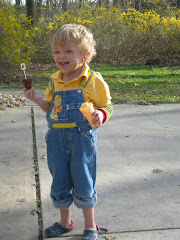

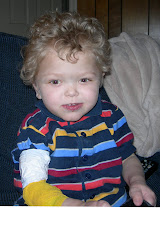

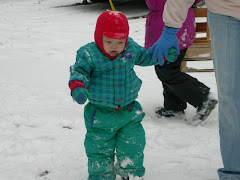

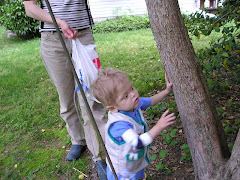
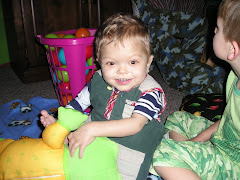
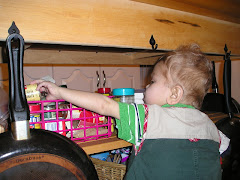
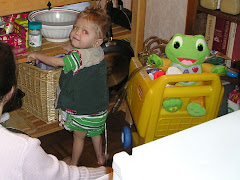
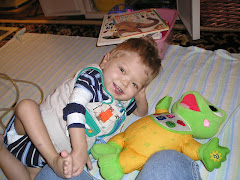
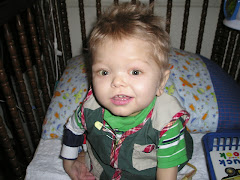
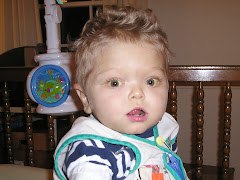
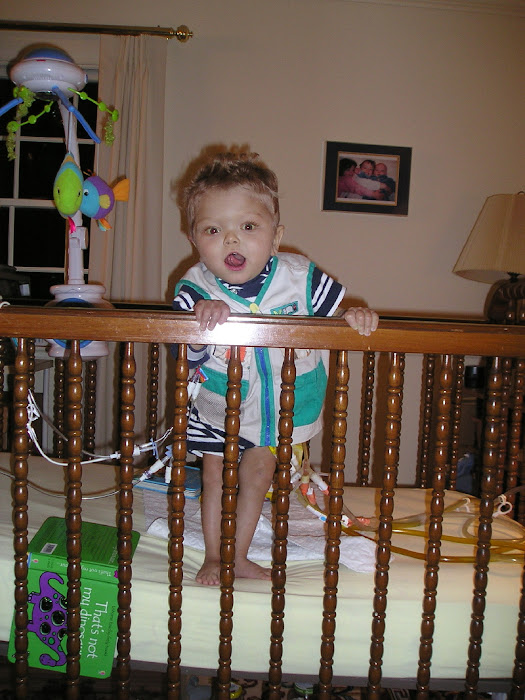
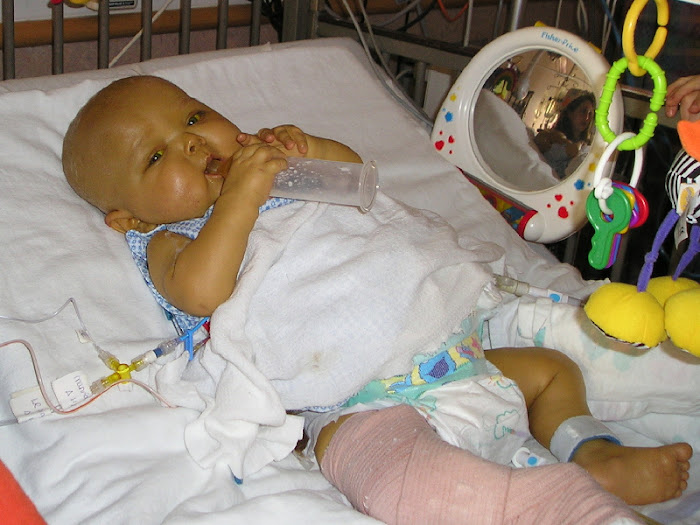
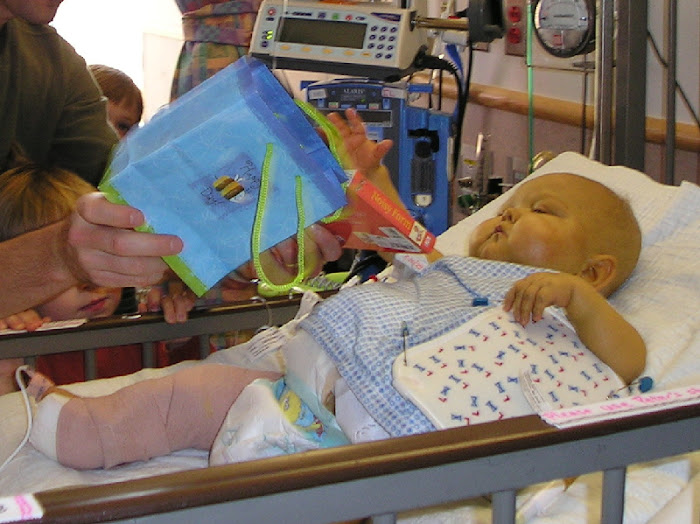
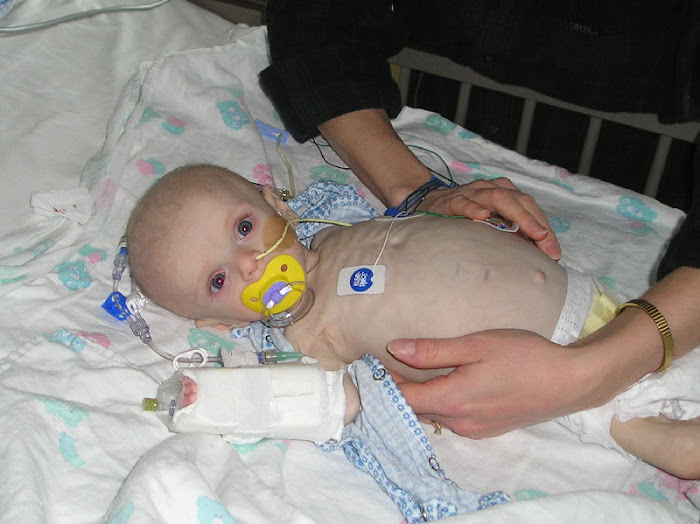
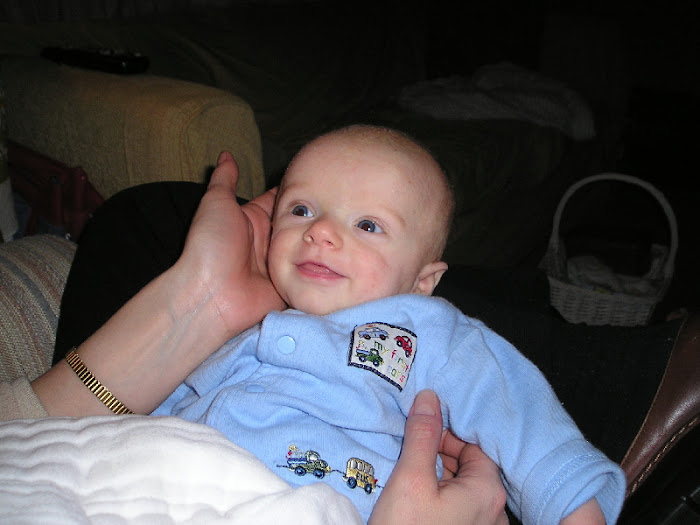
No comments:
Post a Comment